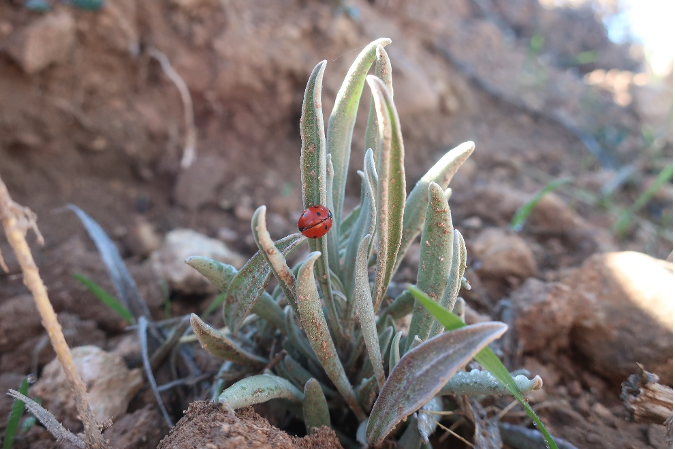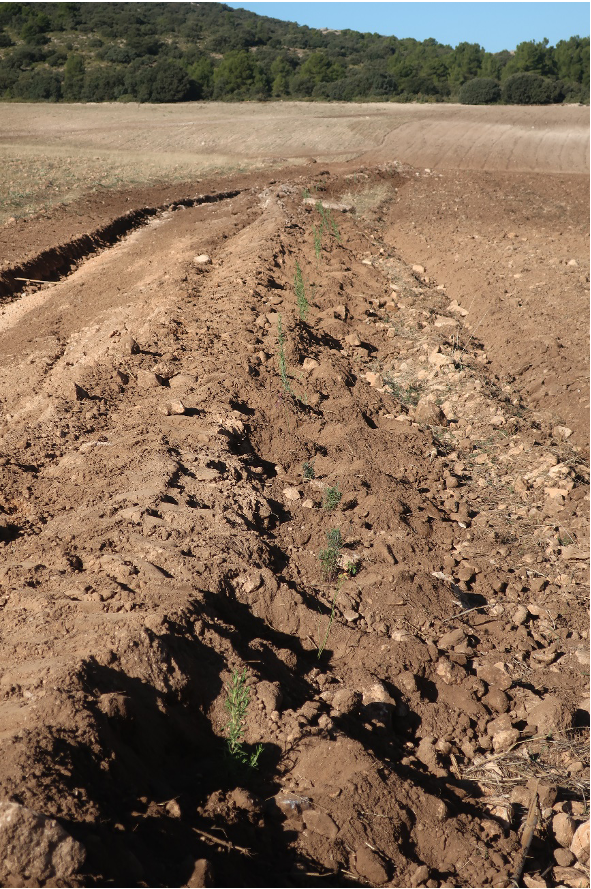Landscape Restoration
In collaboration with:
In collaboration with:
restoration through connecting natural areas
La Junquera focuses on achieving sustainable production while restoring farmland and natural areas through regenerative agriculture practices. These practices not only help to reduce erosion, improve fertility and increase water infiltration but also help to increase biodiversity. The fund received from Patagonia has helped to develop these aims. The project consisted of planting 5000 native shrub and tree species on strategic areas in order to protect the soil against erosion, connect natural areas, and support the biodiversity of the area. Our achievements so far:
Planting 5000 trees and shrubs in the farm, which are around 7km of hedges surrounding farmland and connecting natural areas. According to our calculations, when the trees grow old, this amount could sequestrate a minimum of 50 tons of CO2 from the atmosphere.
Increasing the vegetation complexity of the area by supporting 11 native species. Some of these species add important values to the agroecosystem, as soil retention and biodiversity support, including ecosystem services as pollination or pest control.
From a social perspective, we have supported the local nursery and provided a part-time job to one young Spanish biologist. Bringing back life to the rural areas is essential to fight increasing depopulation rates in the region due to migration to cities.
challenges we faced
Although we are happy with the development of the project and the results, there were some challenges and lessons to learn:
The main challenge we found in the process was the selection of species. Since the farm is located at 1200m above sea level and the region presents an extreme climate (high temperature variation between seasons and scarce rains), the establishment and survival of vegetation gets complicated. We selected 11 native resistant species with the help of a local botanist. We saw that one of these species (Pistaccia lentiscus) could not resist the cold of the winter in many cases, so we will not include it in future campaigns.
In some parts of the farm closer to natural areas, some of the planted individuals were eaten by wildlife. In the future, we should protect the trees by covering them with temporary covers until they grow old enough.
We are waiting to see the development of the planted vegetation community in the future: we expect at least of 60% of survival in general, and as we planted the species in different combinations and spatial structures, we are interested on seeing what yields the higher survival rates.








